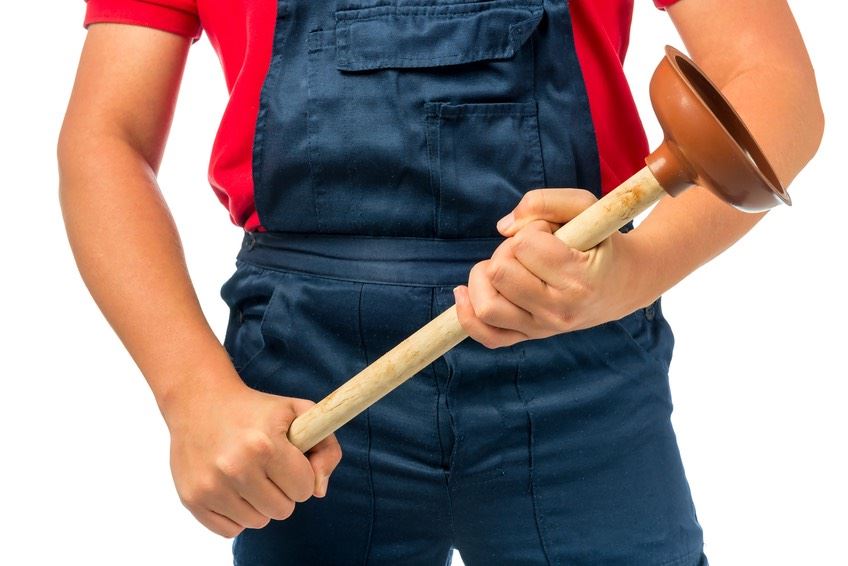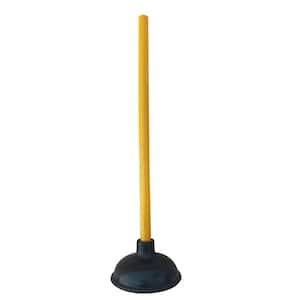Everyone may have their own individual idea when it comes to A Guide to Plungers (and How to Use Them).

Intro
Appropriate maintenance of household drains pipes is vital for avoiding obstructions and guaranteeing smooth water flow. Among the secret devices in every property owner's toolkit is the bettor, alongside numerous drain cleansers developed to take on persistent clogs successfully. This short article discovers how to utilize plungers and drain cleansers effectively to keep your drains pipes flowing easily.
Area 1: Understanding Bettors
Kinds of Plungers
There are numerous types of plungers offered, each designed for various types of drains and blocks. One of the most common types include cup plungers, flange bettors, and accordion bettors.
Just How Plungers Work
Plungers work with the principle of creating pressure and suction to displace obstructions. When correctly used over a drain, they produce a vacuum that can pull out debris or separate blockages.
Choosing the Right Bettor
Selecting the right plunger depends on the type of drainpipe and the nature of the blockage. Cup bettors are perfect for sinks and tubs, while flange bettors are better fit for bathrooms because of their design.
Usual Mistakes with Bettors
Avoiding these blunders makes sure reliable plunging: improper seal around the drainpipe, insufficient force, and unclear surrounding debris.
Section 2: Making Use Of Plungers Effectively
Prep work
Before plunging, guarantee the bettor covers the drainpipe entirely and creates a tight seal. Clear any kind of visible particles around the drain opening.
Method
Start with mild plunging movements to develop suction. Increase pressure progressively, utilizing a stable rhythm. Repeat as necessary up until the drain gets rid of.
Troubleshooting Tips
If diving doesn't work, attempt adjusting the seal, using petroleum jelly for a far better seal, or making use of a different kind of plunger.
Area 3: Recognizing Drainpipe Cleaning Company
Types of Drain Cleansers
Drain pipes cleansers can be chemical or enzymatic. Chemical cleansers use strong chemicals to liquify obstructions, while enzymatic cleansers utilize all-natural enzymes to break down raw material.
Exactly How Drain Cleansers Job
Chemical cleaners react with obstructions to liquify them, while enzymatic cleaners break down natural products like hair and oil without damaging pipes.
Safety and security Factors to consider
Constantly use gloves and eye defense when utilizing chemical drainpipe cleansers. Guarantee sufficient ventilation and comply with supplier guidelines meticulously.
Eco-Friendly Alternatives
Take into consideration utilizing vinegar and baking soda or enzyme-based cleansers for green choices that are safer for pipelines and the environment.
Area 4: Utilizing Drainpipe Cleansers Effectively
Application Methods
Put chemical cleaners straight into the drainpipe opening. Permit them to help the advised time before purging with warm water. Chemical cleaners should rest over night.
Safety measures
Avoid blending different types of cleansers, as this can produce harmful fumes. Never ever utilize chemical cleansers along with a bettor, as splashing can take place.
Managing Persistent Blockages
For relentless blockages, take into consideration utilizing a pipes snake or calling a specialist plumber to prevent damages to pipelines.
Conclusion
Finally, recognizing just how to utilize plungers and drainpipe cleaners effectively is essential for preserving healthy pipes systems. By selecting the right devices and techniques, home owners can take on small clogs and avoid major pipes concerns down the line.
How To Properly Use A Plumbing Snake To Clear Drains
When any drain clogs in our home arise, we tend to gravitate toward the plunger and little else. In cases where the plunger and its vacuum-created pressure are not able to clear clogs, many immediately move to harmful chemicals or simply call their plumber to fix the issue.
we’re happy to help with all drain cleaning needs and concerns. This includes informing you on a few other home remedies you may have at your disposal for minor to moderate clogs, one of which is the use of a plumbing snake. Many people have never used one of these before – let’s go over the steps to take when your drain clogs and you have a plumbing snake available.
Attempt Plunger Use
The first step here, as we noted above, should indeed be to grab your plunger when you notice a drain clog and attempt to resolve it this way. If you’re unsure how to use a particular type of plunger, our plumbers can answer any questions you have. If this doesn’t do the trick, however, you move on to the snake.
Locate And Prepare Snake
A plumbing snake is a metal or plastic device that’s generally about a quarter of an inch thick. It’s design with significant extensions, meant to reach down into your clogged drain and push the clog out. Snakes also contain drain augers that will latch onto and push stubborn blockages.
If your plunger doesn’t clear a clog, locate your snake and bring it to the drain in question. We also recommend keeping a bucket nearby to collect the clog once you pull it out, plus we’d advise wearing goggles and possibly protective gloves.
Feed Snake
Once you’re ready to go, feed the snake slowly down the drain, using the crank device it comes with to keep it moving until it finds the clog. Once this happens, much of the clog will be latched onto the coil so you can pull it out, while the rest will simply break up and flow downward.
Detach Debris
Remove the snake slowly from the drain, and once you’ve done so, pick off any debris that’s stuck to the coil. This is another area where wearing gloves is a must.
Flush Drain
Finally, take a few minutes to ensure the snake has done its job correctly. If you’ve been using it on a toilet, flush the toilet a couple times and make sure everything flows well. If you’ve used it on a different drain, flush it with some room temperature water.
https://www.mybuddytheplumber.com/blog/how-to-properly-use-a-plumbing-snake-to-clear-drains/

Hopefully you liked our part on Tips on How to Effectively Use a Plunger. Thanks so much for taking the time to browse our short article. Do you know anybody else who is enthusiastic about the subject? Please feel free to share it. I take joy in reading our article about How to Unclog Your Sink with a Plunger.
Start Now
Comments on “Tips to Learn Plunger and Drain Cleaners: Specialist Tips”